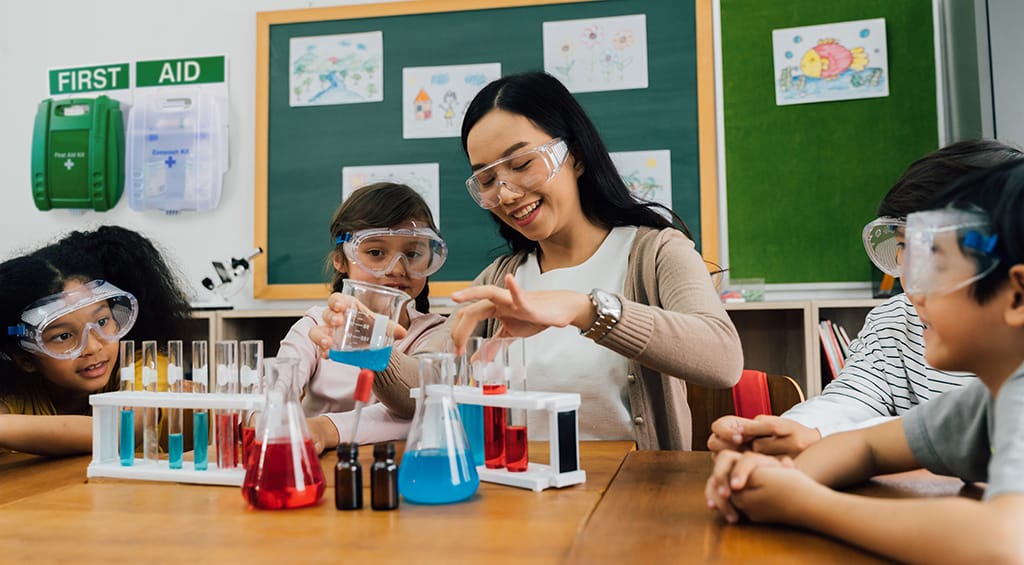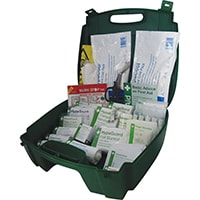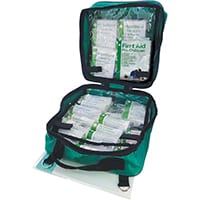
Leaving their child in the care of others can require a large amount of trust from parents and carers. They will almost certainly expect the schools caring for their children to be properly equipped for any medical issues. Especially given the standards that have been set by the Early Years Foundation Stage Statutory Framework (EYFS) and the Office for Standards in Education, Children’s Services and Skills (Ofsted).
Why are school first aid kits important?
In Early Years settings
One of the primary factors that a parent or carer will take into account when considering which school or nursery they should send their child to is how safe they will be while attending. The bare minimum a school can do to guarantee their students' safety is to meet the standards that have been outlined by the EYFS and Ofsted.Schools should also ensure that trained paediatric first aiders have easy access to the appropriate first aid equipment and are able to respond properly to any and all emergencies. Providing measures such as trained carers and first aid supplies allows you to meet legal requirements but also maintain a safe learning environment for all.
Millie’s Mark is a scheme that has been established to offer more transparency to parents which early years education provider meets or exceeds the standards that have been set and put their children’s safety first.
In schools and colleges
It is strongly recommended that schools and colleges consider the needs of any pupils and visitors on site, as well as their employees when making first aid provisions, despite government regulations not actually requiring employers to provide first aid for anyone other than their employees.The government guidelines state that whether on site or off-site, for example attending an educational or sporting event, first aid provisions such as adequate and appropriate equipment, facilities and personnel must be available to all.
How many first aid kits do education environments require?
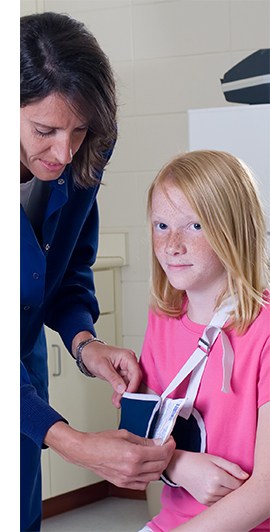 There are various factors that must be considered when thinking about the number of school first aid kits that would be required by a school, college or early years education provider, just as there would be for a workplace first aid kit. To find the appropriate number of kits there will need to be a risk assessment and first aid needs assessment carried out on the premises.
There are various factors that must be considered when thinking about the number of school first aid kits that would be required by a school, college or early years education provider, just as there would be for a workplace first aid kit. To find the appropriate number of kits there will need to be a risk assessment and first aid needs assessment carried out on the premises.Some things that might make an impact on the number of school first aid kits required are:
The number of separate areas in the school
A first aid kit will need to be within quick and easy reach of all areas of a school, so in instances where there are multiple floors of a building it is important to have at least one on each floor to minimise the amount of time between the incident and the casualty getting first aid attention.The number of buildings at a school
Similar to the number of floors that are in a school, it is important to take into account how many separate buildings there are to make up the school. This can also include areas such as a sports field and playground as well.Does the school need specialised first aid kits?
This is particularly relevant for colleges and schools that have science labs or workshops for design and technology, as they may require more than just a standard school first aid kit. For example, a science lab may also require eye wash first aid kits.Off-site trips
Any activities that are taking place off-site will require first aid supplies, so it is recommended that schools have a fully stocked School Outing Kit or a portable sports first aid kit.School vehicle first aid kits
As with any vehicles being used for work purposes or to carry passengers, school vehicles should be equipped with suitable first aid kits. For example, a minibus transporting staff and students should have a Minibus and Bus First Aid Kit on board in case of emergencies.What should be included in an Early Years first aid kit?
All care providers on the Early Years Register are to ensure that a first aid kit is accessible and fully stocked with “appropriate contents” at all times according to EYFS and Ofsted. So, while a nursery’s needs will be decided by their risk and needs assessments, the HSE recommends these items to be included as a minimum for first aid kits in a low-risk environment:
Plasters
Plasters are a staple for any first aid kit, but even more so where children are involved. They are versatile and deal with a lot of common injuries for children, as well as coming in a range of fun designs.Sterile eye pads
Sterile Eye Pads are used if a child sustains a minor eye injury because they help to protect the eye.Triangular bandages
One of the most versatile supplies in a first aid kit, triangular bandages are useful for creating slings or for securing wound dressings in place.Safety pins
Securing bandages and dressings in place can be hard without safety pins, although first aiders will need to ensure they are properly positioned so as not to cause further injury to the child or others.Disposable gloves
To lower the risk of dirt and germs being introduced to a wound via the first aider’s hands disposable gloves are an essential part of the first aid kit.Depending on the results of the risk assessment there might also be a need for items such as:
- Sterile cleansing wipes
- Hand sanitiser
- Microporous tape
- Scissors
- Eyewash
- Gauze swabs
- Tweezers
- A thermometer
Are there any differences for the contents of a school or college first aid kit?
The same HSE standards on minimum first aid kit requirements will cover schools and colleges, but similar to an early year setting, risk assessments may introduce the need for further supplies. For example, sports, science and technology subjects may require further provisions, such as:
Instant Cold Pack
Sprains and strains, caused by practicing sports, are best treated using the PRICE method, so having an ice pack on hand for sporting injuries is something for schools to consider.
Foil Blankets
Foil blankets can prevent hypothermia in emergency situations by helping someone to retain body heat.
Burn Gel
Appropriate first aid gear should be provided, whether that is burn gel or potentially PPE, as chemical and fire burns are serious injuries that can be sustained in a science lab.
Saline Eye Wash
Science labs also bring with them the risk of chemicals getting into a student’s eye. Therefore, saline eye wash will be necessary to administer first aid.
Conforming Bandages
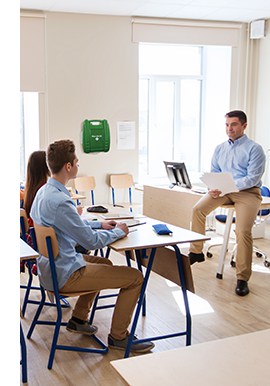 Another first aid supply that might be necessary with the introduction of different sports are conforming bandages. These may be required for the ongoing treatment of sports-related injuries.
Another first aid supply that might be necessary with the introduction of different sports are conforming bandages. These may be required for the ongoing treatment of sports-related injuries.Summary
A school first aid kit is a legal requirement, as is the necessity to keep it fully stocked and well maintained. The number of kits a school requires will largely depend on their own risk assessment but the recommendation is at least one per area.Further specialised kits, for example eye wash kits, burns kits and Sports first aid kits may be required for schools and colleges.
For more information, please read our other blogs.
By Sarah Mason
Explore more:

